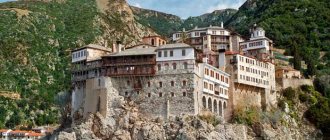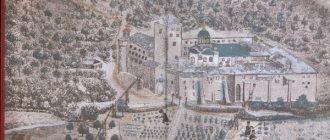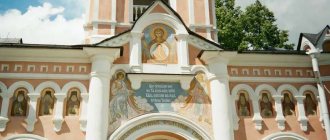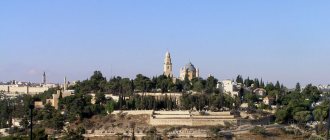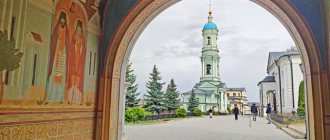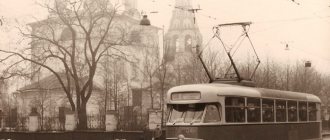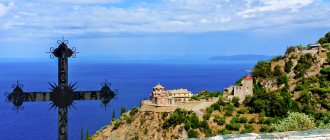Greece is a country that has preserved the cultural wealth of the ancient world. Every corner in these parts is connected with events of world history. A special aura of mystery surrounds the holy Mount Athos - a monastic abode for thousands of true Christian believers and a place of pilgrimage for millions of followers of the religion. The prayed-for, miraculous and incredibly beautiful land attracts tourists from all over the world.
History of Athos
The Thracians were the first to settle on the island of Athos in Greece. This happened 1000 years before the birth of Christ. Favorable natural conditions allowed them to lead a solitary lifestyle.
According to Thracian legend, the island received its name in honor of the mythical giant Athos. In a fight with Poseidon, the titan grabbed a rock and threw it at the enemy. However, Athos missed and the rock stuck into the ground. This is how the future “Holy Greek Mountain” appeared.
Five centuries later, the first Greeks settled on the peninsula, bringing with them the beginnings of Greek culture. In the 7th century AD (691-692), this land turned into an exclusively monastic monastery, and in 1144 it was officially given the title “Holy Mount Athos.”
These events were preceded by the appearance of a legend telling about the journey of the Virgin Mary and the Apostle John the Theologian, which took place in 49. Their ship washed up on the Greek island of Athos as a result of a powerful storm. Coming ashore, the Mother of God was so amazed by the beauty and atmosphere of the place that God gave this land under her protection. Since then, instead of the official name, the phrases “The Lot of the Virgin Mary” or “The Garden of the Virgin Mary” are often heard from the lips of monks and pilgrims.
Geographical and political position of the island
Looking at the map, you will notice that the geographical contours of Athos also look special. It is an integral part of the Halkidiki peninsula, very similar in its outline to a hand with three fingers. The eastern “finger”, washed by the Aegean Sea and the Singitikos Gulf, is the Athos peninsula.
It is noteworthy that the Orthodox Mount Athos in Greece served as a reason for obtaining absolute sovereignty. Legally, this territory is independent from the Greek authorities and is in a self-governing position. Thus, Athos is a full-fledged monastic state, subordinate exclusively to church authorities, and specifically to the Patriarchate of Constantinople.
Climate and nature in the vicinity of Mount Athos
Like the entire Mediterranean, Athos has a comfortable subtropical climate. There are very long summers and not frosty winters. For pilgrims, the best season will be autumn: the summer heat will subside, and the cool, rainy season of winter will not yet begin.
The island is surrounded by dense forests. Many rare species of vegetation have been preserved here, untouched by the influence of animals. The monks provide for their own needs, so extensive orchards, olive plantations and vineyards will delight the eye. And drinking water is obtained from the purest high-mountain springs.
Monasteries of Athos
The entire territory of the peninsula is divided into areas belonging to monasteries. There are 20 monasteries on Mount Athos, and according to the adopted charter, the formation of new settlements is strictly prohibited.
The monastic republic is self-governing, and every year supreme representatives from 4 monasteries are elected (Holy Epistasy). Thus, 5 monastic groups were formed:
- Great Lavra, Esphigmen, Xenophon, Dochiar.
- Karakall, Vatopedi, Kutlumush, Stavronikita.
- Iversky, Simonopetra, Philotheus, Pantocrator.
- St. Paul, Hilandar, Grigoriat, Xiropotamus.
- Konstamonite, St. Panteleimon, Dionysiatus, Zograf.
The status of a monastery not only ensures participation in power, but also gives the right to own territory.
Among the Greek monasteries on Mount Athos, the oldest is the Great Lavra, founded by St. Athanasius in 963. On its territory there is a monastery with ancient frescoes and many Christian relics. Among them are the miraculous icons “Ekonomissa” and “Kukuzelissa”, the cross and staff of St. Athanasius, the relics of saints and parts of the tree of the Holy Cross.
Lavra of St. Athanasius (Great Lavra)
Caracal
Monastery of St. Paul.
Monastery of St. Panteleimon
In addition to the monasteries, there are 12 monasteries on Mount Athos. These monastic settlements do not have any rights and depend on the monastery to which the territory belongs. In total, 1,500 monks live on the island.
Athos monasteries in Greece
There are 20 active monasteries on Mount Athos. Additional monasteries are not planned. However, the creation of separate rooms for monks is not prohibited. The Athos monasteries in Greece became famous not only for the size of the churches and their decoration, but also for their high authority.
Great Lavra
The Great Lavra of St. Athanasius is the oldest monastery on the peninsula. A temple was built at the base of Mount Athos at the end of the 1st millennium. Its creator was Father Afanasy of Athos.
The monastery keeps the following religious relics:
- icon of Koukouzeliss;
- staff and cross of the creator of the Lavra;
- Economist icon;
- relics of Basil the Great, St. Andrew the First-Created and other saints.
Its library occupies an important position in the activities of the temple. There are about 20,000 book editions, manuscripts, the Athos Codex of the Great Lavra, foreign manuscripts, maps from the Koalen Codex of the 6th century, code 049, 0167. The structure looks like a fortified settlement. Its walls protected from attacks by pirates and other conquerors.
Here is the Cathedral Church, unique icons of F. Crete. The dining room is decorated with paintings depicting philosophers of Ancient Greece. The Lavra unites 17 temples. After the death of Athanasius, Saint John and Uranus began to lead the monastery.
Vatoped
Vatopedi Monastery is located in the northeast of the Athos Peninsula. The way the temple looks now is the merit of 3 wealthy monks (Antony, Athanasius and Nicholas) living in Greece at that time.
The Vatopedi Monastery includes 31 temples. The main building of the church was built in the 10th century. To this day, the cathedral houses paintings from the Macedonian school of the 14th century and Byzantine wall paintings. The church has 5 chapels and temples. One of them is the Church of Our Lady of Consolation. This is where monastic initiation takes place.
Vatopeda has 27 cells and 2 hermitages. It also has its own territory in Constantinople (St. Andrew's Compound).
In the mid-18th century, the famous Athos Academy was located here. Vatopedi stores 8 miraculous images of the Mother of God. Here is also the honorable belt of the Virgin Mary, which was in Constantinople for a long period of time. After an attack by Turkish soldiers, the relic was returned to the monastery.
The cathedral owns a library. It is one of the richest on the entire peninsula. It contains manuscripts, books, scrolls, and a huge part of the documentation. A special room (sacristy) stores religious vestments and holy vessels, which have an exquisite appearance. Today there are 50 people permanently staying in Vatopedi.
Iversky
The male Orthodox Iveron Monastery (Iveron) was founded by John of Iveron in the 10th century. The temple is located in the northeastern part of Greece. Named after an ancient kingdom called Iberia. From the very beginning it belonged to Georgia. However, in the mid-14th century it came into the possession of Greece. The cathedral caught fire three times, but was restored due to monetary donations from Byzantium, Georgia, Serbia, and Russia.
The main advantage of Iveron is the Goalkeeper (Miracle-Working Icon). She came to Athos by sea during the period of movements directed against the veneration of icons.
The lemon tree (a candlestick for 7 candles, made of silver and placed behind the throne) is a valuable symbol of Iveron . Also of great importance is the door located between the extension and the porch.
It is made of black wood and decorated with silver. The temple contains the imperial robe, holy vessels, as well as a 5th century Gospel written on parchment material.
Currently, approximately 30 monks live on the territory of the monastery. It includes cells, the monastery of John the Baptist, and cathedrals outside the territory of Iveron. The library stores manuscripts, liturgical scrolls, and books written in different languages in its premises. The memorial date of the temple is August 15 (in honor of the Dormition of the Mother of God).
Hilandar
Athos monasteries in Greece emphasize the virtues of the country. Among the temples there is Hilandar. It is the property of the Serbian Orthodox Church. Located in the northeast of the Holy Land. The creator was Rastko (Archbishop Savva of Serbia) and Stefan Nemanja (his parent).
Instead of luxurious apartments, Rastko chose a cell for monks and headed towards Athos. There he was tonsured a monk and named Savva. Soon his father arrived there, having undergone tonsure, he was given the name Simeon.
An important relic of the church is the icon of the Mother of God Tricherrus or the Three-Handed One.
Hilandar includes 13 small temples and chapels, cells (15 pcs.) and 1 courtyard. The library contains unique manuscripts. The offerings of ancient Russian pagan soothsayers are also kept here. Approximately 60 Serbian monks live permanently on the territory of the monastery and outside its walls.
Dionysiatus
The temple was founded in the 14th century by Father Dionysius, a native of Kastoria. It is located in the southwestern side of the peninsula on the rock of Mount Athos. Dionysius called the church Nea Petra. But the Emperor of the Trebizond Empire, Alexius III the Great Komnenos, invested considerable funds in the construction of the monastery.
Therefore, he gave it another name - Magal Komnenos. Significant donations to the temple were made by the emperors of Constantinople, the Austrian ambassador to Constantinople, bishops, and Wallachian rulers.
Anthony 4 in the 80s In the 14th century he gave the official name to the monastery - Patriarchal. In 1535 the temple caught fire and the fire burned everything. However, after some time, I. Petro restored the building. The dining room contains paintings depicting 20th century warfare and an unknown cosmic ray.
The building is always dark (even during the day), since all the rooms are built very tightly, and the nearby houses cover the windows of the temple. Dionysiate has chapels and small cathedrals (14 pcs.), cells (7 pcs.), and a farm. The Chapel of the Mother of God Akathista stores the icon of the Greeting of the Virgin Mary, which is made on the basis of mastic and wax.
The Dionysiatus library contains manuscripts and books, including ancient ones. The main holiday here is the Nativity of John the Baptist (June 24). The monastic community of the monastery is home to up to 50 people.
Kutlumush
Near Kareya there is the Kutlumush temple. Its existence is indicated in official documentation from the mid-12th century. But the deed of purchase suggests that the cathedral was founded at the end of the 10th century. After some time, the cathedral was destroyed. According to ancient legend, the founder of the church was a man of Arab origin - Konstantin Kutlumush.
In the 14th century, the monastery was going through hard times. At that moment, the Catalans began to plunder it. It flourished during the reign of Chariton of Imvros.
Fires started in the monastery more than once. During one of them, the room was completely destroyed. But the Danube government allocated material resources for the restoration of the church.
The wooden iconostasis, made in a carved style, is kept in the Kutlumush Monastery. There are also icons and church vestments here. The library contains approximately 662 manuscripts and more than 3,500 book editions. There are 20 monks living in the Cathedral. The main holiday here is the Transfiguration of the Lord. Celebrated on August 6th.
Pantocrator
The monastery is located in the north-eastern side of Mount Athos. According to legend, its creator is A. Komnenos. However, in fact, the temple was founded by his brothers, as well as by I. Primikerios, who was not the last person in the judicial system.
The cathedral was written about in official documents back in the 50s. 14th century. But no one knows the specific date of its creation.
icon of the Mother of God - Gerondissa in the Athos monastery of Pantokrator (in Greece)
The Komnenos brothers allocated funds for the construction of the church. With these material benefits, farmsteads were built. In the Hermitage there is an icon that the brothers presented to Pantocrator. Catherine the Great also made her contribution to the development of the monastery. In the main temple there is an icon of the Mother of God - Gerondissa.
The Pantocrator includes 14 cathedrals (7 each within the cathedral and outside its walls), as well as cells (5 in total). The church owns Greek, Wallachian and Asia Minor farmsteads. The library contains handwritten codices (approximately 350 pieces) and book editions (about 3,500 pieces).
There are 15 monks living on the territory of Pantocrator. The main holiday of the temple is the Transfiguration of the Lord, which is usually celebrated on August 6.
Xyropotamus
The location of the church is the center of the peninsula. From some sources it follows that the creator of Xiropotamus is Pulcheria. According to another version, the founders of the cathedral are Roman Lakopine, Constantine the Noble, and Simonopetra monks.
In the 11th century the monastery achieved its greatest prosperity. Its territory extended to Iveron and the Temple of St. Paul. After some time, the cathedral's possessions began to decrease. But even today Xiropotam has a significant number of sites. They are located on the territory of forests, a special place of which is given to the chestnut forest.
The darkest time in the history of the monastery was the time of the Turkish yoke. At the beginning of the 17th century, a fire almost completely wiped out Xiropotamus. Sultan Selim 1 of Turkey and the rulers of Moldo-Wallachia proposed to restore the cathedral.
The monastery includes temples, cells, and a representative office in Kareya. Here is the largest fragment of the Holy Cross in the Universe. 60 monks live in the cathedral. March 9 – Patronal Feast of Xiropotamus.
Zograf
The church is located near the base of a wooded hill. It was built at the beginning of the 10th century by the brothers Aaron, Moses, and John.
Repeated fires destroyed the monastery's archives. Therefore, there is no information about its development before the 13th century. At that time, monks from Bulgaria lived in the cathedral.
Zograf was repeatedly destroyed by pirates. But each time it was restored with monetary donations from the emperors of Byzantium. Until the 50s In the 19th century, Serbian and Greek clergy also lived here.
The monastery keeps the Akathist Icon of the Mother of God. The church contains the relics of the great martyrs, canonized, and fragments of the tree of the Life-giving Cross of the Lord. The library houses Greek and Slavic writings, as well as approximately 10,000 book editions. About 10 monks, immigrants from Bulgaria, live in the monastery. The Day of the Great Martyr George is the main holiday of the temple (April 23).
Dohiar
In the southwest of Mount Athos is the Dochiar Cathedral. It was built in the 10th century by A. Afonsky’s student Euthymius.
During the national liberation coup in Greece, almost all the church relics of Dochiar were destroyed. Its cathedral church, which was founded back in the 16th century, was painted by Tzorzis (a student of the icon painting school in Crete). There are 15 chapels and house churches here, and in Karey there is the cell of All Saints.
The cathedral library houses approximately 5,000 printed publications and approximately 545 manuscripts. Patronal feast - Cathedral of the Archangel Michael (November 21).
Caracal
The Athos monasteries in Greece, including the Caracal Cathedral, are particularly beautiful. The temple is located above sea level, in the center of Iveron and the Great Lavra. The church buildings were built in the 2nd century under the leadership of the Roman Emperor Caracal.
However, he was a follower of paganism and had no right to belong to monasteries. According to another version, the church was founded in the 11th century by an old man whose name was Caracal. In the documentation of Prote Nikephoros, the monastery was first reported back in 1018.
The temple was completely devastated in the 13th century after pirate attacks, but it was successfully restored. The church was restored in the 16th century.
The Church of St. Nicholas has been part of Caracal since the 17th century. It also includes cells (18 pieces) and 7 cathedrals, 5 of which are located on their own land and 2 outside the walls of the monastery. The main relics include liturgical vessels and church vestments. About 30 clergy live on the territory of Caracal. The main holiday is the day of the Holy Apostles Peter and Paul (July 12).
Filofey
The temple is located in the northeast of the Athos Peninsula. Near it grow chestnuts and there are vegetable gardens and orchards. Nearby are the ruins of the Temple of Asklipius. It was built by Saint Philotheus at the end of the 10th century. The first information about the monastery was recorded in the documents of Nikephoros Protus in 1015.
At the end of the 19th century, a fire destroyed the monastery, but did not touch the new church building, built in 1746. The fire caused problems in the economy. At the beginning of the 20th century, Holy Kinot took the Philotheus monastery under its leadership. It consists of 9 churches on its own land and 3 outside its borders, cells and chapels. Today, no one lives in half of these cells.
The library premises stores Russian and Romanian book editions, manuscripts, as well as liturgical scrolls. About 60 clergy permanently live on the monastery land. The patronal feast day is the Annunciation of the Blessed Virgin Mary (April 7).
Simonopetra
The church was built in the mid-13th century by Saint Simon. The construction of the temple was not easy, since the process took place near a cliff. Once Simonopetra had a chance to visit the Mother of God. The builders' vessels with oil were emptied, however, in the morning (after the celebration of the Entry into the Temple of the Most Holy Theotokos) it appeared again in an incredible way.
The cathedral was founded at the beginning of the 17th century. However, it received its modern appearance only in 1891 upon completion of restoration work.
There are 4 monasteries within Simonopetra and another 8 outside its territory. The archive contains many Romanian, Turkish, Greek documents, book editions, and singing codes. About 50 people live here. The fundamental holiday is celebrated on January 7 (Christmas).
St. Paul's
The church is located at the base of Mount Athos on its western side. The creator is Saint Paul of Xiropotamia, who lived in the 10th century. Numerous disasters at the beginning of the 20th century destroyed most of the premises that were awaiting restoration work. The monastery has marble decoration.
The church includes cathedrals and chapels, hermitages, cells, and separate buildings on the Holy Mountain (kaliva). Here you can also find ancient printed publications and more than 500 sacred scriptures. On February 15, the monks of the cathedral celebrate the Presentation of the Lord (the main holiday of the temple).
Stavronikita
This monastery is the smallest on Mount Athos. It is located in the eastern part of the peninsula in the middle of Pantokrator and Iveron.
Some claim that the temple was founded by Nikita and Stavros, who lived in the area. According to others, the church was built by Tzimisce (an officer of the head of the empire of John). Still other sources mention Nikita (the maker of crosses) as the creator of the monastery.
Fires struck the cathedral 4 times. The latest fire was the most fatal for the church. The monastery was obliged to pay heavy taxes to the Turkish people. The monk from Vatopedi, Theophilus, helped settle accounts with Turkey. The library room stores books, ancient writings, and a 12th-century Psalter, the text of which is written on parchment in gold. About 30 monks live in the monastery on a permanent basis.
The main holiday of the cathedral is December 19, that is, St. Nicholas Day.
Xenophon
The church is located near the base of the hill. Historical documents report the existence of Xenophon during the reign of Nikephoros 3 Botaniates.
Like in other monasteries, fires occurred here. In 1817, the main part of the temple and ancient documentation were damaged by fire. Philotheus, who lived here until his death, helped restore it. With his funds, a new cathedral was built on the northern side of Xenophon. Now it is the largest on the Holy Mountain. It was also possible to revive the old church, located not far from Xenophon.
There are also chapels (within the monastery and outside its walls), cells, kalivas, and a monastery.
In the library room of the monastery there are only books, including European printed publications. The church library stores manuscripts, parchment scrolls, and other documentation. The cathedral has approximately 60 monks. The Day of the Great Martyr George the Victorious (May 6) is considered a patronal holiday.
Gregoriat
The church is located on the southeastern side of Mount Athos between the temples of Simonopetra and Dionysiatas. It was built by the monk Gregory together with his disciples in the 14th century. There is little information about it due to the fires that destroyed the church archives. To revive the temple, Orthodox sovereigns made monetary donations.
The cathedral includes kathismas, temples, and cells in which the clergy prepare their own food and provide favorable living conditions. Here are books, sacred scriptures and vessels, church vestments. About 70 monks live in the monastery. The main holiday of the cathedral is December 19 (Nicholas Day).
Esphigmen
The cathedral is located on the eastern bank of the Holy Mountain. Built in the 5th century under the leadership of Pulcheria and her brother Theodosius 2. The first message about the temple can be found in the second Athos charter in 1045. The Church did not know difficult times until Greece was attacked by Turkish troops. Esphigmen succumbed to persecution by pirates and several fires.
The monastery was restored in the 15th and 16th centuries, thanks to the financial support of Alexei Romanov (Russian Tsar). The monarchs of Byzantium also helped the church. The library contains scriptures and manuscripts. The representative of Esphigmen does not participate in the meetings of the Sacred Cinema, since he is not a member of it. The number of monks living in the monastery is about 65 people.
The main holiday in Esphigmene is the Ascension of the Lord (movable date).
St. Panteleimon
The monastery is located on the sea coast in the middle of Xiropotamus and Xenophon. At the place where it is now, the monastery was formed at the end of the 18th century. Little is known about its historical development, since the fires took everything with them, including the library and archives.
Since the end of the 19th century, services have been held here in Slavic and Greek. The refectory, which is located opposite the temple, can accommodate up to 800 monks.
The library is located in a room consisting of 2 floors. Here you can find church scriptures in Greek and Slavic languages, 16 Words of St. Gregory the Theologian, the Gospel amazingly decorated in miniatures, as well as book editions of different nationalities. About 50 monks live here, most of whom come from Russia.
The patronal feast day is August 9 - the day of Panteleimon.
Konstamonite
In the forest there is the Konstamonit temple. It was built by Constantine the Great and his son Constantius. According to other sources, the monk Konstamonit is related to the creation of the monastery.
In the 15th century, the church was helped by Georgiy Brankovich and Anna (sovereigns of Serbia). But even their support could not save Konstamonit from Turkish taxes. Only in 1705 did the monastery revive its activities with the help of the French consul Arman. The fire of 1717 destroyed the eastern side of the cathedral. Restoration began only 100 years later.
Here is the image of St. Stephen, the icon of Our Lady Antiphonetria, liturgical vessels and church vestments. The library contains scriptures and books. About 30 people live in the temple on a permanent basis. The monks consider the main holiday to be the day of the Apostle and First Martyr and Archdeacon Stephen: January 9.
Saints of Athos
The Holy Mountain of Greece has its own heroes. The list of revered saints who worthily passed through the hardships of earthly life contains many names. The monks carried their faith with ecstasy and were ready to accept any torment. A striking example of such an act is the story of St. Agapius.
He was a novice of the elder from the cell of the Holy Trinity. One day Agapius went down to the sea, but at that moment pirates landed on the shore. They captured the monk and took him to Magnisia, where they sold him into slavery to a Muslim. For 12 years Agapius lived in hard work and constant prayers for salvation.
The Mother of God heard his requests and appeared. She unfastened the chains, opened the doors and ordered the monk to flee to Athos. Agapius fulfilled the command and returned to the elder. However, he did not accept it. “You deceived your master, but you cannot deceive God. At the hour of judgment, you will have to answer for the pieces of silver that he spent on your purchase. Return to your master and serve him, and when the Lord bless him, he will let you go. This is how you will find your salvation,” these were the words of the wise old man.
Agapius obeyed the order. The Muslim was surprised at the return of the fugitive. The monk’s virtue and fierce faith impressed the owner, so much so that he took his sons and went with them and the former slave to the island of Athos. They accepted the Orthodox faith and lived in humility and virtue until the end of their days.
Venerable Agapius
Holy Mount Athos and Russian pilgrims
The first records of Russian travel to Athos date back to the time of the Baptism of Rus, when the island was visited by St. Anthony of Pechersk. He lived here for a long time, and then went to Kyiv for missionary purposes, where he founded the first center of monasticism - the Pechersky Monastery.
Back in 1016, a Russian monastery was founded on the Athos lands, but exact data about it has not been preserved. In the 12th century, Russian monasticism received the Russik monastery on Athos, which developed throughout the Middle Ages. Although at times it was quite difficult for the monks, and the monastery fell into complete decay.
Today, the center of Russian Orthodoxy on Mount Athos is the monastery of St. Panteleimon. Sometimes it is called: “Rossikon” or “New Russik”. Also inhabited by Russians are the monastery of the Prophet Elijah and the monastery of St. Andrew.
Climatic conditions and fauna of the Athos Peninsula
The climate here is Mediterranean-type, hot in summer, warm in winter and often raining. Snow precipitation is rare here, but if it does fall, it stays on the surface for quite a long time. The climate has a beneficial effect on the fauna. Everywhere, except for the peak in the south, forests and shrubs grow: spruce, oak, chestnut. The southern part is represented by desert and arid areas. Thanks to the climatic conditions, residents grow citrus and fruit trees, walnuts on the slopes of Athos; there are grape fields and olive plantations. The water from local streams is clean and safe to drink.
There are many endemic plants on the mountain and in its areas
The flora of these places is very rich and diverse, largely due to the lack of pastures. It is noteworthy that the monks of Athos do not eat meat. During research, scientists discovered 14 species of endemic plants on the Athos lands that are not found anywhere else on the planet. More than 70 Balkan endemics and 40 Greek ones grow on Mount Athos.
There is no cutting down of forests and bushes here, but there is one big danger for the local fauna - fires. The most extensive fire on Mount Athos over the past 40 years occurred in 2012. The flames of the fire destroyed about 5,000 hectares of forest.
Women on Mount Athos
Women and children under 12 years of age are strictly prohibited from visiting the Athos monastery. The taboo was violated as a last resort: when the lives of women and children were in danger, they could take refuge in the church. Today, women face up to a year in prison for entering Mount Athos.
Ladies can admire views of the island from a distance of 500 meters. Special sea cruises are organized for this purpose. From a comfortable boat slowly cruising along the coast, you can admire picturesque landscapes, ancient monasteries and the Sacred Mountain.
Why are women not allowed to visit monasteries and the mountain?
The legend says that when the Mother of God set foot on the shore, she left a covenant that no woman would set foot on these blessed shores, near which the holy mountain stands. Although some women for some reason wanted to get to Holy Athos, despite the fact that this was impossible.
Monasteries of Athos (WPFDC / flickr.com)
For example, the daughter of the Emperor of Byzantium, Theodosius Placidia, coming from Rome, gathered along the way to see the monasteries. But the voice of the Mother of God in the temple ordered her to leave the lands of Athos.
Princess Maro brought a rich donation to the monasteries, but on the way she met an angel who told her to turn around.
In the 11th century, not only women were forbidden to stay on Mount Athos, but also female animals.
Since 1953, violation of this rule has even been punishable by imprisonment for a period of two months to a year.
Why are such strict rules introduced? There has long been a movement in Europe whose goal is to defend the idea of equal rights for women. And representatives of the fairer sex, justifying their actions as discrimination, are trying to get to Athos.
Despite the ban (avaton), women still visited here, the monks allowed refugees to stay in the monasteries.
Visa to Mount Athos
Men can enter the Orthodox mountain in Greece after receiving a special permit called Diamonitirion.
You must apply for entry one month before your visit. To do this, you must inform the Pilgrimage Bureau of your arrival date and send a copy of the first page of your passport. The request is submitted free of charge, but the issued permit will need to be paid directly upon receipt in the city of Ouranoupolis (cost 25 euros).
The visa gives the right to stay on the peninsula for 4 days and spend the night in any of the monasteries. If desired, in Karei you can extend the validity of the permit. Accommodation in the monastery is free, but it is better to thank the monks for their hospitality by purchasing their souvenirs.
The application procedure can be simplified, because Many travel agencies offer diamonitirion registration. True, such a service costs more than 100 euros.
Visiting rules
For those who want to visit the Holy Mountain, there is a set of rules that must be strictly followed.
Despite the EU's efforts to allow women into the peninsula, the monks are adamant. So, only men with a visa are allowed to Athos. Clerics also receive the corresponding pass document from the Ecumenical Patriarchate.
Tourists and pilgrims are required to follow certain rules when visiting this place:
- When on Mount Athos, you must follow the daily routine that the monks follow.
- Clothes should cover shoulders and legs and not be obnoxiously bright.
- On Mount Athos you cannot talk loudly, use obscene language, sunbathe or swim.
- Filming with a video camera is also not allowed. Photography is permitted with the consent of the monks.
- You can purchase souvenirs made by monks.
This place radiates powerful renewing energy. Many pilgrims noted that after visiting the land of Athos they found peace of mind and inner fullness.
How to get there?
The sacred Mount Athos in Greece is located on a part of the peninsula closed to the laity, so the path to it is not easy.
First you need to arrive on the Halkidiki peninsula. You can fly into Thessaloniki airport or travel here from another city in Greece by bus, train or taxi. True, such a trip will not be complete without numerous transfers.
You can get from Halkidiki to Athos only through the seaport of Daphne. The path to this bay lies through the town of Ouranoupolis. Regular buses run from the bus station in Thessaloniki to Ouranoupolis. The price of a one-way ticket is 12.5 euros. The trip will take from 2.5 to 3 hours. By deciding to order a taxi, you will reduce the time spent by 2 times, but will pay 120-140 euros for the trip.
Mount Athos in Greece: location on the map, description, history
The peninsula of Halkidiki is an integral part of Greece, located in the Aegean Sea (northern coast). It has a peculiar appearance and looks like a human hand with 3 fingers. Athos is the “finger” that is located to the right of the others. Stretches 60 km to the southeast.
It is surrounded by the gulfs of Ierisou (on the eastern side), Singitikos (the western part of the peninsula) and the Isthmus of Xerxes. Nearby is Ouranoupolis, a famous city in Greece. People traveling to holy places pass through this place. They want to see Mount Athos, whose height is about 2033 m.
You can only get to the mountain by sea. To do this, you need to take a ship to the main city of the monastic republic of Kareya. Due to strong winds, travelers often take a shortcut and come to Mount Athos from Ouranapolis.
The Athos monasteries in Greece were inhabited by ancient Greek tribes long before the present time. On Mount Athos there were sea routes connecting the country with the East. A thousand years before the birth of Jesus Christ, small towns were located here.
Herodotus and Thucydides in their works highlight the following settlements:
- Dion;
- Physsos;
- Akroafos;
- Olophyxos;
- Apollonia;
- Kleone.
Soon the first monks arrived on Athos. Previously thriving towns of about 10,000 people began to be abandoned.
Detailed map of the Athos Peninsula
The first idea of what Athos looks like is given by a map of Greece and the Chalkidiki peninsula. Let's now look at a detailed diagram that shows all the roads and monasteries on the territory of Athos.
First of all, we arrive at the port of Daphne - the sea gate of Athos on the map of Greece. In the diagram they are indicated by a red dot. Notice another large red circle. This is Kareya - the administrative center of the monastic state. There are shops, a post office, cafes and other benefits of the new civilization. This is the only place that can be spoken of as a city where the holy Mount Athos is located. Everything else you will see are monasteries, monasteries and cells, where you can take a break from a long walk.
If you want to climb to the top of the mountain, then pay attention to the southern edge of the island. The place where the holy mountain is located is marked with a red triangle, and next to it we see an indicator of the height of Athos and the designation of the cell of Panagia.
Actually, the entire peninsula is a neighborhood of large monasteries and small hermitages. You can get to some of them directly from the ferry that docks at their piers. Others can only be reached on foot. But what is Mount Athos of Greece? This is a constant search for a way.
Elders on the top of the mountain
There is a beautiful legend about invisible elders. Of course, for local monks, this is not just a legend; for them, the saints of Athos actually exist. Why this is so can be judged by the narrative of Paisius the Holy Mountain.
View of the peninsula from the top of Mount Athos (Dbachmann / wikimedia.org)
Finding himself on Mount Athos for the first time, Paisius traveled to the monastery of St. Anna, got lost and accidentally went up to the top of the mountain.
Wanting to find the right path, he prayed to the Mother of God. And then suddenly he saw the hermit, a glow emanating from his face.
About 70 years old, which is as old as one could give him by appearance. And from his clothes it became clear that he had not had contact with monks for a long time.
The hermit told Paisius that he was going the wrong way and showed him the right way to the monastery of St. Anna. In response, Paisiy asked the elder where he lived. The hermit pointed to the top. Paisius asked him for his blessing and continued on. Only later did Paisiy Svyatogorets learn that it was one of the elders living on the top.
Mystical places on the Holy Mountain
Like any territory, the Orthodox Mount Athos in Greece has its secrets and mysteries.
Thus, in the highlands there is the Idolio rock. At the dawn of the settlement of the island, there was a large pagan temple here. Passage to this peak is strictly prohibited, although a well-trodden path leads to it. Numerous crosses are installed along it, protecting the Orthodox land from the penetration of evil spirits.
Locals also try to avoid the Mogul monastery, which was once located just above the Great Lavra. Today there is a rocky slab, sloping into the sea.
According to legend, previously there was a skete under it, consecrated in honor of Basil the Great. Strong discord began among his monks, and suddenly they heard a strong roar of rockfall. At that moment, a huge rock, towering 500 meters above their monastery, crashed down with a roar and swept away all traces of the monastery mired in strife. All that remained was a deserted slab, where the roar of rockfalls can still be heard.
Beaches and resorts in Athos
If you are planning a beach holiday, it will only be available in Ouranoupolis or Nea Roda. In the Orthodox part of the island it is strictly prohibited:
- wear bright clothes;
- bare legs and shoulders;
- swim and have a sunbath;
- to swear;
- conduct video shooting.
In addition, the daily routine established by the monks should be followed.
At the resorts you will find both comfortable beaches and attractive wild areas, to which a taxi will take you.
Hotels
On the territory of the sacred mountain, besides monasteries, you will not find any other housing. But in the resort part, in Ouranoupolis or Nea Dora, you can easily find an inexpensive and comfortable hotel on Mount Athos. The list of the best usually includes:
- Eagles Palace;
- Xenia Ouranopolis;
- Alexandros Palace Hotel;
- Hotel AKTI Ouranopoli Beach Resort.
A trip to Athos will delight you not only with the amazing beauty of nature, but also with the peaceful atmosphere of the Orthodox land, which leaves its own unique and indescribable impressions in everyone’s soul.
Some recommendations for pilgrims
Many experienced pilgrims, who have visited the shrines of Athos more than once, give the following advice for novice travelers:
- It is better to plan a pilgrimage in the company of fellow believers, since in a large space among strangers you may not make new acquaintances, which will be psychologically difficult for the traveler.
- If a pilgrim does not even speak the basics of English or Greek, he is strongly recommended to take a pocket translator with him to communicate.
- In anticipation of long walks, you should take comfortable closed shoes with you.
- Do not forget that the mountain of monks in Greece is not a tourist place, and everyone who is going there has no right to sunbathe, swim, smoke, conduct photo reports, dress in shorts and T-shirts with bare shoulders, be intoxicated and behave inappropriately lead.
Pilgrims on Mount Athos
In conclusion, it must be said that similar Orthodox shrines no longer exist in the world, and, at least once in their life, every Christian is simply obliged to visit this sacred land, even in order to pay their tribute to the ancestors who change their usual way of life in a monastic monastery, for the sake of other people’s faith in God.
